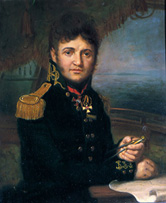The first European explorers reached these heavenly volcanic islands in the middle of the Pacific Ocean at the end of the 18th century. One, the famous British voyager James Cook, also found his final resting place there. As a direct consequence of this “contact with civilization,” a local chieftain named Kamehameha (sometimes spelled Tamehameha) proclaimed himself King Kamehameha I in 1810. The dynasty he founded reigned for almost the entire 19th century, gradually enrooting Western institutions – schools, churches, trading companies and taverns. Increasing numbers of Europeans and Americans settled in Hawaii, eventually sealing the fate of Hawaii’s sovereignty: in 1875 the United States forced the Kingdom of Hawaii to sign a trade agreement, and in 1887 they won the right to build a naval base at Pearl Harbor. In 1893 the last Hawaiian queen, Liliuokalani, was overthrown, and for five years the islands existed as a republic. In 1898 they were annexed by the USA and declared a full-fledged US state in 1959. Today native Hawaiians make up only 10% of the island’s population.
But few know that in the early 19th century, one of the islands of the Hawaiian archipelago was briefly part of the Russian Empire.

The first Russian explorers to reach Hawaii were sailors taking part in a round-the-world expedition in 1804 under the command of Captain Yuri Lisyansky. The Hawaiian islands were subsequently visited by an expedition of Russian ships under the command of Captain Ludwig von Hagemeister, Vasily Golovnin, Ivan Kruzenshtern, Otto von Kotzebue, and others. After defeating Napoleon, Russia signed a number of peace treaties in October 1814, through one of which obtaining the right to incorporate the Hawaiian islands.
Fort Elizabeth, built on Kauai, one of the largest of the Hawaiian islands, was a bastion of the Russian dominion over the archipelago.
The initial contacts with the local inhabitants occurred in 1806. The Russians offered to trade a commodity that was entirely unknown to that area – furs. Soon King Tomari (Kaumualii), the chieftain of the northern Hawaiian islands, petitioned Aleksandr Baranov, the manager of a trading firm known as the Russian-American Company, to ask Emperor Alexander I to incorporate the territories under that chief’s rule into the Russian Empire. And at the end of the French campaign in 1814 Russia formally established a protectorate over Hawaii. In 1815, a representative of the Russian-American Company, Georg Schäffer, made an attempt to definitively secure the Hawaiian islands for Russia …
The German-born Georg Schäffer, who had moved his family to Russia in 1808, used to serve at Russia’s dominions in Alaska. Tasked by Aleksandr Baranov with aiding a Russian ship loaded with cargo that had been stranded in Hawaii, Schäffer sailed to Kauai in 1815 accompanied by a small retinue. There he took advantage of the rivalries between King Kamehameha, whose influence was expanding, and Kaumualii, the chieftain of Kauai, who dreamed of independent rule over at least his own island. Promising protection by the “white king,” Schäffer obtained permission from Kaumualii to construct three forts on the island. These were built between May and June of 1816: Fort Elizabeth (constructed of stone and named after the consort of Alexander I, Elizabeth Alekseyevna), plus two more made of earth – Fort Alexander (in honor of Alexander I) and Fort Barclay (named for the legendary hero of the War of 1812). But not the remote Russian Empire nor even the Russian-American Company were able to assist this opportunistic German – in March of 1817 five warships sailed to the island carrying soldiers from the Kingdom of Hawaii, as well as Americans, who demolished all of the Russian facilities that had been intended to supply Alaska and Kamchatka with vegetables and tropical fruits. Three Russians from Schäffer’s contingent were killed in the skirmishes, and he was forced to quit Hawaii along with the other Russian nationals. When they reached St. Petersburg, the aggrieved Schäffer asked the Russian government to grant him the rights to all of the Hawaiian islands, but Alexander I – nervous about the prospect of a conflict with Great Britain and the US – decided to terminate that project. The Russian-American company never reaped much profit from its trade with Hawaii, instead turning its gaze toward Russian California, which offered more promising opportunities for commerce…
After Schäffer’s ouster, Fort Elizabeth became part of the Kingdom of Hawaii’s line of defenses and continued to “stand sentry” until 1864 under the name of Fort Hipo. In 1966, its ruins were declared a US National Historic Landmark, and currently a must-see tourist attraction, the Russian Fort Elizabeth State Historical Park, occupies the site and surrounding land on the mountain where the fortress once stood.
Source in Russian: the author’s blog
Adapted and translated by ORIENTAL REVIEW















Comments